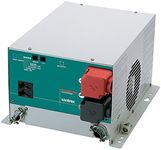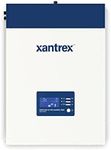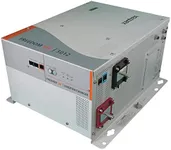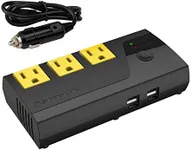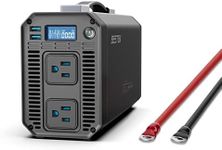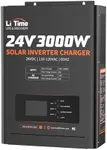Buying Guide for the Best Marine Inverter Charger
Choosing the right marine inverter charger is crucial for ensuring a reliable power supply on your boat. An inverter charger converts DC power from your boat's batteries into AC power to run your household appliances, and it also charges your batteries when connected to shore power or a generator. To make the best choice, you need to consider several key specifications that will determine the performance and suitability of the inverter charger for your specific needs.Power Output (Wattage)Power output, measured in watts, indicates how much power the inverter can supply to your appliances. This is important because it determines what kind of devices you can run simultaneously. Inverters typically range from a few hundred watts to several thousand watts. For light usage, such as charging small electronics, a lower wattage (500-1000W) may suffice. For running larger appliances like microwaves or air conditioners, you will need a higher wattage (2000W or more). Assess your power needs by listing the appliances you plan to use and their wattage requirements.
Battery Charger Capacity (Amperage)The battery charger capacity, measured in amperes (amps), indicates how quickly the inverter charger can recharge your boat's batteries. This is important for ensuring your batteries are recharged efficiently, especially if you have limited time connected to shore power. Chargers typically range from 20A to 150A. For smaller battery banks, a lower amperage (20-50A) may be sufficient. For larger battery banks or if you need faster charging, look for higher amperage (60A or more). Consider your battery bank size and how quickly you need to recharge when choosing the charger capacity.
Waveform TypeThe waveform type refers to the quality of the AC power output by the inverter. There are two main types: modified sine wave and pure sine wave. Pure sine wave inverters produce a cleaner and more stable power, similar to what you get from the grid, and are suitable for sensitive electronics and appliances. Modified sine wave inverters are less expensive but may not work well with all devices and can cause interference or reduced efficiency. If you plan to power sensitive electronics, opt for a pure sine wave inverter. For basic appliances, a modified sine wave inverter may be adequate.
Input VoltageInput voltage refers to the DC voltage that the inverter charger requires from your boat's battery bank. Common input voltages are 12V, 24V, and 48V. This is important because it needs to match your boat's electrical system. Smaller boats typically use 12V systems, while larger boats may use 24V or 48V systems for greater efficiency. Ensure the inverter charger you choose matches your boat's battery voltage to avoid compatibility issues.
Surge CapacitySurge capacity is the ability of the inverter to handle short bursts of higher power demand, which is important for starting appliances with high initial power requirements, like refrigerators or pumps. Surge capacity is usually higher than the continuous power rating and is measured in watts. For example, an inverter with a continuous rating of 2000W might have a surge capacity of 4000W. If you plan to run appliances with high startup surges, ensure the inverter has a sufficient surge capacity to handle these demands.
EfficiencyEfficiency refers to how well the inverter converts DC power to AC power, expressed as a percentage. Higher efficiency means less energy is lost in the conversion process, which is important for maximizing the use of your battery power. Inverters typically have efficiencies ranging from 85% to 95%. Higher efficiency is generally better, especially if you rely heavily on battery power. Look for inverters with higher efficiency ratings to ensure you get the most out of your battery capacity.
Size and WeightSize and weight are practical considerations, especially if space is limited on your boat. Inverter chargers come in various sizes and weights, and it's important to ensure you have enough space to install the unit securely. Larger units may offer more power and features but can be more challenging to install. Measure the available space and consider the weight of the unit to ensure it fits well in your boat's layout.
Protection FeaturesProtection features are safety mechanisms built into the inverter charger to protect both the unit and your boat's electrical system. Common protection features include over-temperature shutdown, overload protection, short-circuit protection, and low battery voltage shutdown. These features are important for preventing damage to the inverter and your appliances, as well as ensuring safe operation. Look for inverter chargers with comprehensive protection features to ensure reliable and safe performance.


